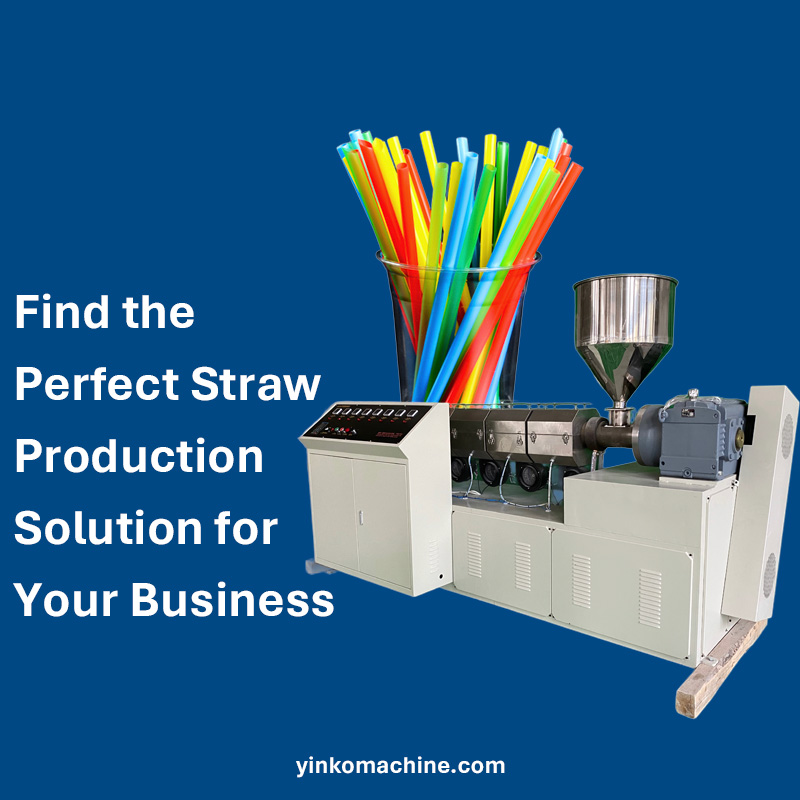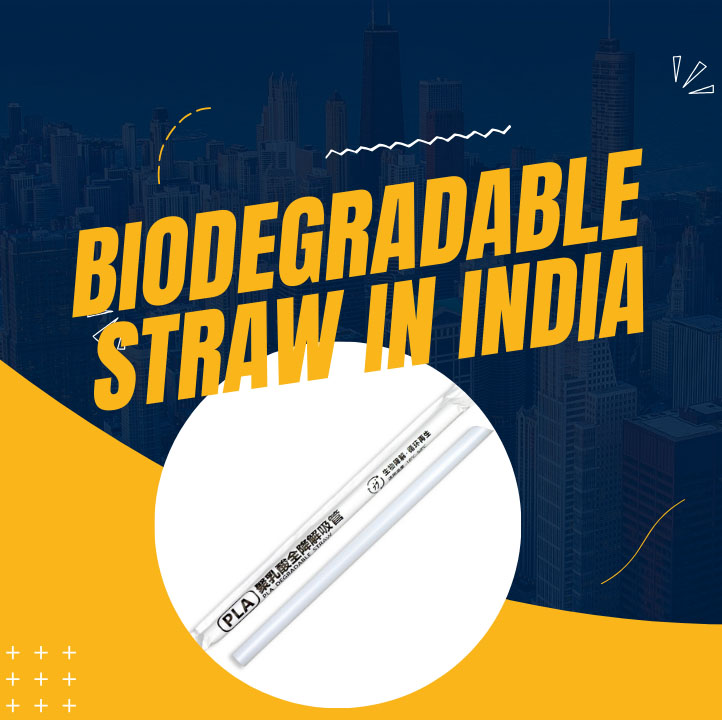 How to Choose the Right Straw Production Equipment for Your Business
How to Choose the Right Straw Production Equipment for Your Business
Jun 01, 2025
Introduction
For a new start-up or an established manufacturer looking to upgrade, choosing the right straw production equipment remains a critical issue and decision point. Whether you’re transitioning into the eco-straw space or optimizing an existing plastic straw operation, selecting the right machines assures you of consistent product quality, efficient production, and cost-effective output.
Increasing environmental awareness and shifting consumer demands have fueled the drinking straw industry’s demand for biodegradable alternatives like paper and PLA straws. Governments around the globe are rolling out stricter regulations regarding plastic, forcing innovation and changing equipment requirements for the industry.
This guide will walk you through the five steps to selecting the best straw manufacturing machinery depending on your material, volume, packaging, customization, and the supplier you choose.
Step 1 — Know What Type of Straw and Material You Want to Use
Your first and most critical step is knowing what type of straw you want to make. This will affect every decision you make thereafter; what machines you need and how your production line will be laid out will all be determined by the kind of straws you want to produce.
Straw Materials
• Plastic Straws (PP/PE): Still used in many markets. Plastic straws are made using a straw extrusion machine and are inexpensive to make by the thousands.
• PLA Biodegradable Straws: Made from renewable resources like cornstarch. PLA straws require a compatible plastic extrusion machine set up for the different heating and cooling requirements of the PLA material.
• Paper Straws: The most widely accepted eco-friendly option today. Paper straws are made using a paper straw manufacturing machine. The machine rolls multiple, layers of food-grade paper into tubes and applies water-resistant adhesive to the seams.
Common Straw Shapes
• Straight Straws: This is the standard output of most extrusion and paper rolling machines. These are modified later as to how they will be used.
• Flexible Straws: Also called bendy straws, flexible straws start out as straight straws and go through a flexible straw forming machine that creates a corrugated section that bends to facilitate drinking.
• U-Shaped Straws: Used commonly for juice boxes and milk cartons. These originate as flexible straws that are bent into a U shape and then packaged using a Tetra Pak straw packing machine.
Note: You cannot form paper straws using extrusion machines. You must have a separate paper straw rolling machine. PLA and plastic straws are extruded.
Step 2 — Define Your Production Volume and Speed Requirements
How many straws you expect to make each day or month will determine which machine specifications are appropriate for you.
• Small Startups or Cafés: A machine that is low to medium speed and has basic features may be all you need. Go with semi-automatic machines to help keep initial investment costs down.
• Mid- to Large Factories: If you have high-volume requirements, you’ll need high-speed straw manufacturing machines (either plastic or paper). These machines put out the products quicker, have fewer stoppages, and usually incorporate cutting, drying, and counting all in one line.
• Automated
• Fully Automatic Machines: Best for continuous production with minimal numbers of people needed to run them.
• Semi-Automatic Machines: Less expensive, but there are manual feeding or cutting tasks that have to be done at various stages.
Also, make sure you evaluate if you’ll need things like automatic loading of material into the machine, multiple lanes of output or smart alarm systems.
Step 3 — Think About Packaging Needs. Single Versus Multi-Stick
Once your straws have been formed, the next critical decision is packaging. This determines the hygiene of the product, the shelf appeal, and how well it works with the end user.
Popular Packaging Machines
• Single Straw Packing Machine: Wraps each straw individually in BOPP film or paper. This is ideal for cafés, fast-food restaurants, and export customers who demand clean packaging.
• I-Shaped Straw Packing Machine: Wraps straws using a four-side seal method. Outputs straws in a continuous row that can be cut off individually or in bundles. Ideal for factory automation and for packing flexible straws or U-shaped straws in rolls.
• Tetra Pak Straw Packing Machine: Designed specifically to take flexible straws, bend them into U-shapes, and seal them in four-sided continuous lines—usually for juice box applications.
• Multi-Straw Bag Packing Machine: Accepts straws from upstream machines that are individually packed, puts them together in a plastic bag and automatically seals, counts, and cuts the bags. This is a good fit for retail multipacks and bulk customers.
Packaging Materials
• Paper wrappers: Great for eco-friendly brands.
• BOPP film: Clear, inexpensive, and used a lot when packaging plastic straws.
By packaging the way your ultimate customer (coffee chains versus supermarket retailers, for example) wants, you can increase perceived product quality and decrease labor to make your products.
Step 4 — Look at Machine Configuration and What Can Be Customized
Straw production machines come with a lot of features that can be customized for your specific needs.
• Color: Do you need dual-colored or tri-colored straws? You will want to go with a multi-extruder configuration to allow for co-extrusion.
• Screw Diameter: This will affect how much you can output and material usage. Common diameters are 50mm or 65mm.
• Cutting: You can select rotary cutters, servo-controlled cutters, or blades that are adjustable for length based on how long you want your straws cut and the precision of the cut.
• Cooling: Make sure you have good cooling tanks to keep straws straight and to prevent them from getting deformed during high-speed extrusion.
• Expandability: If you go with a modular machine, you can add autofeeders, multi-lane cutters and online printing modules later.
Make sure you always check with your supplier about what you will need to add on later to make sure your factory will be scalable.
Step 5 — Compare Suppliers for Reliability and Support
Choosing a good supplier is as important as choosing the right machine.
Evaluation Criteria
• Experience & Reputation: Does the supplier make straw machines?
Do they have a successful history of exporting and no issues with their business?
• Certifications: CE, ISO, FDA, etc., for producing in food-grade environments.
• After-Sales Support
• Remote troubleshooting
• Spare parts availability
• On-site installation and training
Geographical Comparison
• China: Lower prices, wider selection, and quicker lead times. Best choice for worldwide customers.
• India: Mid-range prices, working on support.
• Europe: Higher prices, better machines, stronger brands.
You can do a trial sample run or visit their factory to verify what they are telling you about themselves.
Final Checklist: Before You Buy
Before you order, make sure you’ve checked all the important decision boxes.
✅ Choose the type of straw and material
✅ Define the amount of production you’re targeting
✅ Select the appropriate packaging method
✅ Make sure the machine has customizable options
✅ Evaluate suppliers who will provide good service support
✅ Get quotes/samples/test runs
⸻
Conclusion
Choosing the right straw production equipment is not just a technical decision. It’s one that impacts your entire product line, cost structure, and ability to satisfy customers.
Once you know the materials you will need, define the things you need, and select the right partners, you will position yourself for long-term success in the sustainable straw business.
Want expert help or a custom straw machinery solution? Contact us today for a no-obligation consultation and to get a custom equipment proposal for your company.
ĐỌC THÊM

 How to Choose the Right Straw Production Equipment for Your Business
How to Choose the Right Straw Production Equipment for Your Business
 Xu hướng tương lai của ngành công nghiệp rơm phân hủy sinh học ở Ấn Độ: Điều hướng các quy định về môi trường
Xu hướng tương lai của ngành công nghiệp rơm phân hủy sinh học ở Ấn Độ: Điều hướng các quy định về môi trường